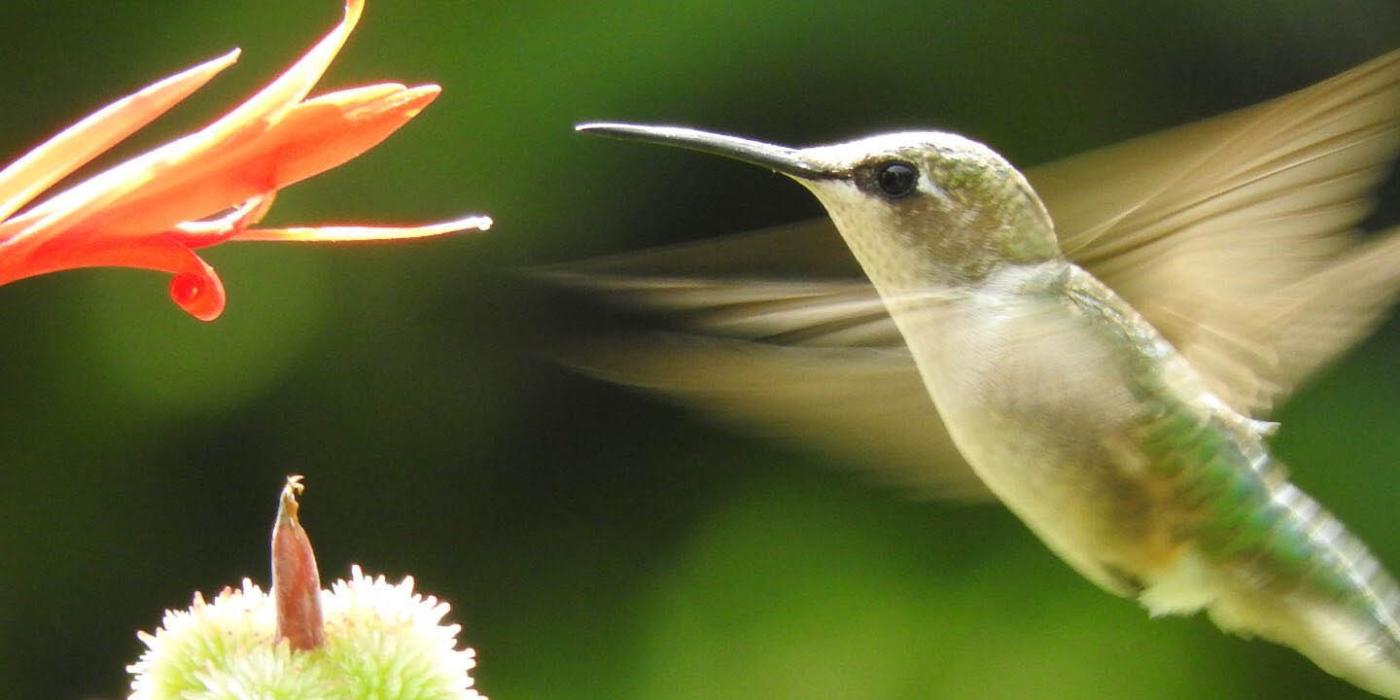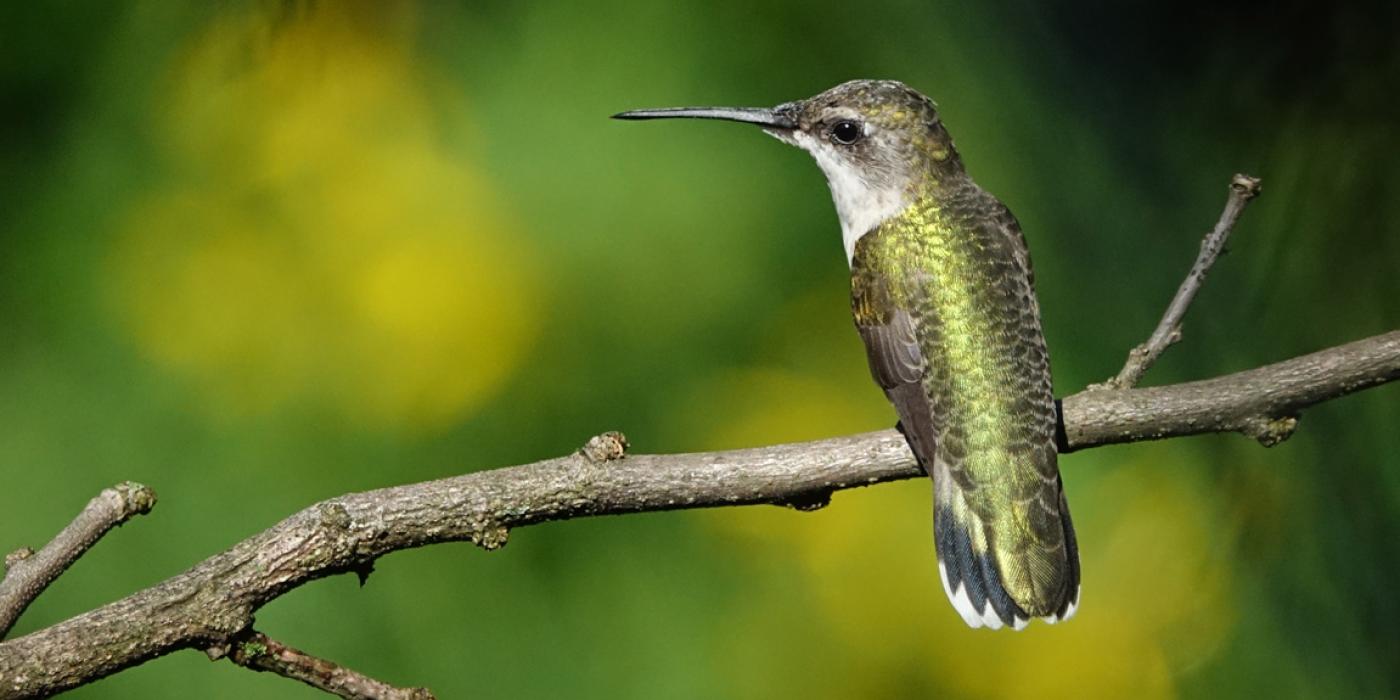Physical Description
Their head, back, wings and tail have a metallic green plumage. Their underbellies are white. Males have a brilliant red throat that can appear lighter or darker based on light conditions, while females have a white throat.
Size
Adults are between 2.8-3.5 inches (7-9 centimeters) long, with a wingspan of 3.1-4.3 inches (8-11 centimeters). They weigh about as much as a nickel (5 grams or 0.18 ounces).
Native Habitat
They can be found in open woodlands, fields and orchards. They are often spotted in suburban areas with lots of flowers, such as parks and backyards. During the winter, they prefer open and dry tropical scrub areas.
Communication
Males make a high-pitched squeaky chirp that sounds almost mouse-like.
Food/Eating Habits
Ruby-throated hummingbirds mainly get food from flowers and flowering trees. They feed while hovering, sticking their long tongues into the centers of flowers to draw out nectar. They are also fond of drinking sugar water from backyard hummingbird feeders and will prey on tiny insects when available.
They burn so much energy during their flight that they drink up to half of their body weight in sugar water and nectar each day. Learn how to make your own hummingbird nectar.
They are territorial and will defend their food sources against other hummingbirds.
Sleep Habits
Ruby-throated hummingbirds are active during the daytime and sleep at night.
Social Structure
Ruby-throated hummingbirds are mainly solitary outside of courtship.
Reproduction and Development
During the breeding season, males perform a courtship display in front of females, flying side-to-side while making a "tik-tik" sound with their wings.
Nest-building and incubation are handled by females only; males take no part in caring for the young. Females build tiny cup-shape nests made of grasses and plant fibers, which are often camouflaged with lichens and dead leaves. They lay clutches of two white eggs, which are then incubated for 11-16 days before hatching occurs. The young birds fledge after about two to three weeks.
Help this Species
Be a smart consumer. Choose products made with sustainable ingredients, such as Smithsonian certified Bird Friendly coffees, which support farmers striving to limit their impact on wildlife and habitat.
Practice ecotourism by being an advocate for the environment when you’re on vacation. During your travels, support, visit or volunteer with organizations that protect wildlife. Shop smart too! Avoid buying products made from animals, which could support poaching and the illegal wildlife trade.
Be a responsible cat owner, and keep cats indoors or under restraint when outside. Never release animals that have been kept as pets into the wild.
Try fundraising for conservation organizations in new and fun ways. You could donate your birthday to conservation, or host a bakesale to benefit wildlife!
Plant native flowers in your garden to help feed resident and migrating pollinators. You'll make your lawn beautiful and help wildlife at the same time!
Never release balloons. Animals often mistake them for food or become entangled in their strings. Looking for an alternative? Try blowing bubbles instead!
Meet the Animals
Ruby-throated hummingbirds are not endangered, although individuals are often at risk from window collisions and predation from larger animals, including house cats.
Smithsonian's National Zoo and Conservation Biology Institute. (n.d.). Ruby-throated hummingbird. Retrieved November 30, 2025, from https://nationalzoo.si.edu/animals/ruby-throated-hummingbird
Animal News

Giant Panda Qing Bao Gets a Checkup ›

7 Spooktacular Animal Facts for Halloween ›


